Hook Lighthouse, a light story / Phare de Hook, histoire de lumière
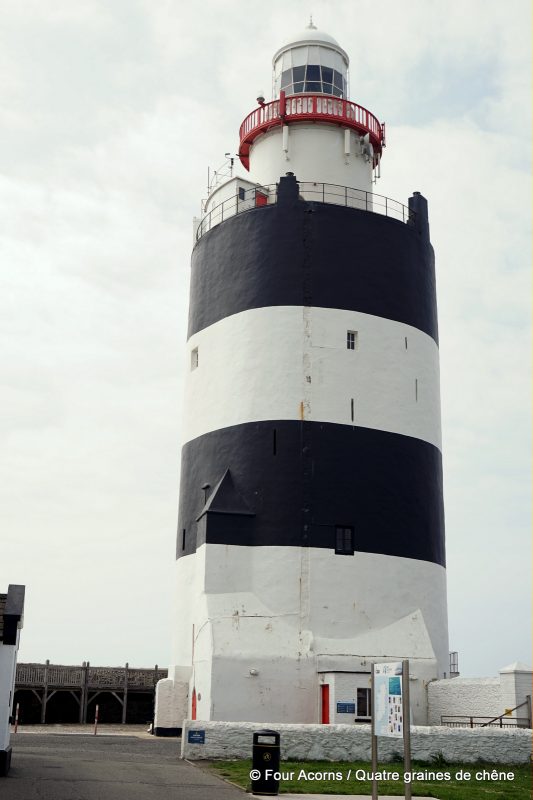
When you have nothing more to say, just drive
For a day all round the peninsula.
The sky is tall as over a runway,
The land without marks, so you will not arrive
But pass through, though always skirting landfall.
Seamus Heaney
The Peninsula
Driving down Hook Head, the calm waters on both sides of the narrow peninsula were like a sheet of steel under the light grey sky. After a lengthy drive on bumpy country roads from the campsite, Hook Lighthouse finally appeared in the distance through the sea mist.
Arriving at the “oldest operational lighthouse in the world”, there was a surprising summer fête atmosphere about the place, with scores of camper vans, numerous cyclists, and many families enjoying the balmy weather on the lawn.
Taking the guided tour of the lighthouse tower means going back 800 years in history, up 115 steps, inside 4-metre-thick stone walls. The acorns relished every minute of it.
Guided tour of Hook Lighthouse
The tour starts on the blackened ground floor of the medieval tower, which used to be the coal store. There has been a beacon on Hook Head since the 5th century. A striking life-size hologram of Cistercian monk St. Dubhan explained how he first lit a fire on the headland to warn sailors of shipwreck.
On the first floor, where the two lighthouse keepers and their families used to live and sleep, we met the (virtual) 13th-century knight who built the lighthouse – William Marshal, Earl of Pembroke and Lord of Leinster. Also known as the “Greatest Knight”, he erected the Norman lighthouse tower to protect and develop the shipping trade.
The monks looked after the light, then a coal fire beacon, until 1641. The lighthouse passed into the hands of several authorities, until the body in charge became known as the Commissioners of Irish Lights (CIL) in 1867. Four years later, the light started burning gas.
I glanced back to say farewell to the Hook, and at that second the beam from the light caught my eyes. It was as if the lonely old lighthouse was winking at me and saying ‘Yes, I remember too’.
– Eileen Wickham
On the second floor, a former lighthouse keeper and his wife recounted in a captivating video their unique daily life during their four-year posting at Hook in the late 1960s. The acorns were mesmerized.
In 1972, the lighthouse switched over to electricity. When it became fully automated in 1996, the keepers left for good, and with them, a way of life spanning eight centuries.
From there, it was only a few more steps to the balcony. On that stubbornly misty day, the views didn’t stretch as far as expected. Somehow, I wished we could have gone up to the red balcony, closer to the lantern. Nowadays, the lighthouse uses a battery-powered LED light.
Walking down all 115 steps again, we then were shown into the former watchtower, where lighthouse keepers used to sit and keep an eye on the sea at all times. The old ship horn stored in a corner of the room provided hands-on, if noisy, entertainment.
‘Where’s the lightbulb?’ Squirrel asked the guide as we left the building.
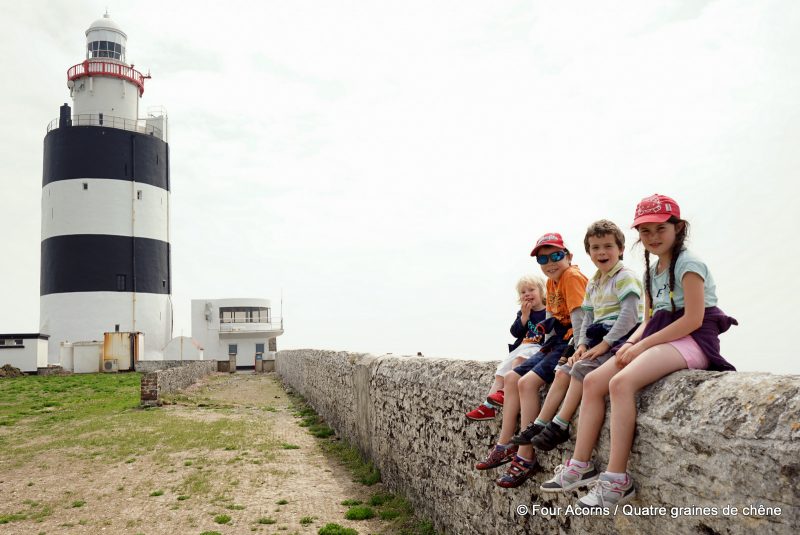
En route vers Hook Head, Co Wexford, les eaux calmes de part et d’autre de l’étroite péninsule ressemblaient à une feuille d’acier sous le ciel gris clair. Au bout d’une heure sur des petites routes cahoteuses après notre première nuit de camping, le phare de Hook apparut enfin au loin, dans la brume marine tenace.
A l’arrivée au “phare en fonctionnement le vieux du monde”, l’ambiance était à la fête de village, avec des dizaines de camping-cars, de nombreux cyclistes et plein de familles profitant du beau temps sur la pelouse.
Visite guidée du phare de Hook
En 115 marches d’escalier, la visite guidée permet de parcourir les 800 ans d’histoire du phare de Hook. Les graines de chêne en ont apprécié chaque seconde.
La visite commence au rez-de-chaussée noirci de la tour médiévale, qui renfermait la réserve de charbon. Il y a un fanal à Hook Head depuis le Ve siècle. Un hologramme grandeur nature du moine cistercien Saint Dubhan expliqua comment il alluma le premier feu sur la pointe, pour avertir les marins du danger de naufrage.
Au premier étage, là où habitaient naguère les deux gardiens du phare et leurs familles, nous avons rencontré le chevalier (virtuel) du XIIIe siècle qui fit construire le phare : William Marshal, Comte de Pembroke et Seigneur de Leinster. Il fit ériger la tour normande de 36 mètres de haut, avec des murs de 4 mètres d’épaisseur, pour protéger et développer le commerce maritime de son fief.
Les moines continuèrent d’entretenir la flamme, alors un simple feu de charbon, jusqu’en 1641. Par la suite, le phare passa sous la coupe de plusieurs organismes, avant que la société Commissioners of Irish Lights (CIL) n’en prenne le contrôle en 1867. Quatre ans plus tard, la lanterne commença à fonctionner au gaz.
Je jetai un coup d’oeil en arrière pour dire adieu au Hook, et à cet instant, le faisceau lumineux attira mon regard. Ce fut comme si le vieux phare solitaire me faisait un clin d’oeil et disait : “Moi aussi je me souviens”.
Eileen Wickham
Au deuxième étage, un ancien gardien du phare et sa femme Eileen racontèrent dans une vidéo captivante les détails de leur vie quotidienne au phare, lorsqu’ils y furent postés pendant quatre ans à la fin des années 1960. Les graines de chêne étaient fascinées.
En 1972, le phare passa à une alimentation électrique. Quand il fut automatisé en 1996, le dernier gardien quitta les lieux. Ainsi s’éteint un mode de vie vieux de 800 ans.
De là, une dernière volée d’escaliers nous conduisit au balcon. Par cette journée de calme plat mais voilée, la vue était quelque peu limitée. J’aurais aimé monter jusqu’au balcon rouge, plus près de la lanterne. De nos jours, le phare fonctionne sur batterie avec une lumière LED.
Après avoir redescendu les 115 marches, la guide nous emmena dans l’ancienne tour de garde, d’où les gardiens du phare surveillaient sans cesse la mer. La vieille sirène de bateau rangée dans un coin de la pièce fournit quelques minutes d’animation bruyante pour les graines de chêne.
“Mais où est l’ampoule ?” demanda Ecureuil à la guide comme nous sortions du bâtiment.
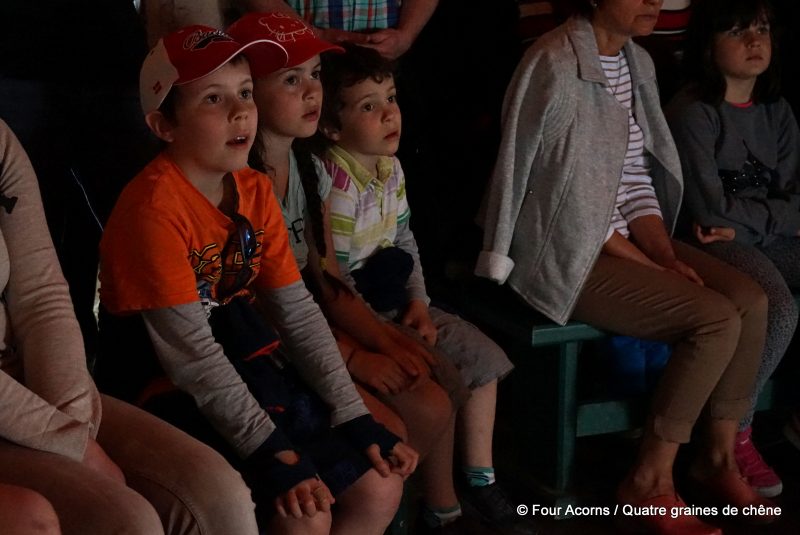
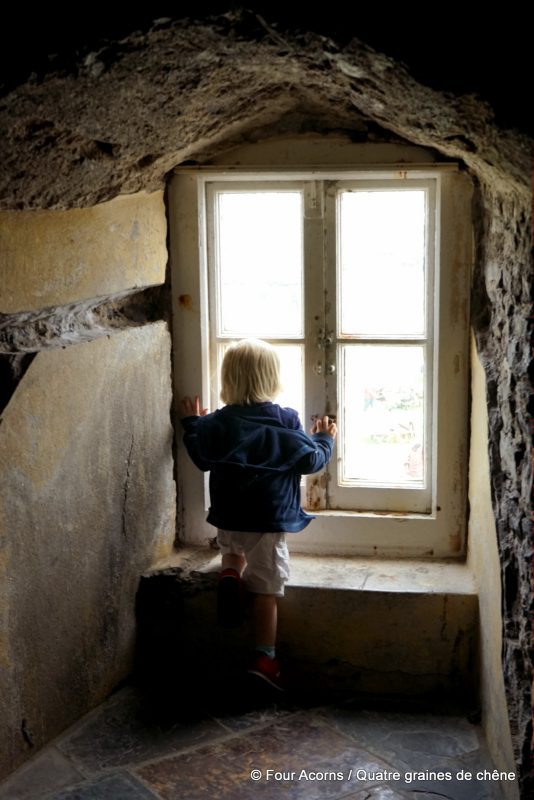
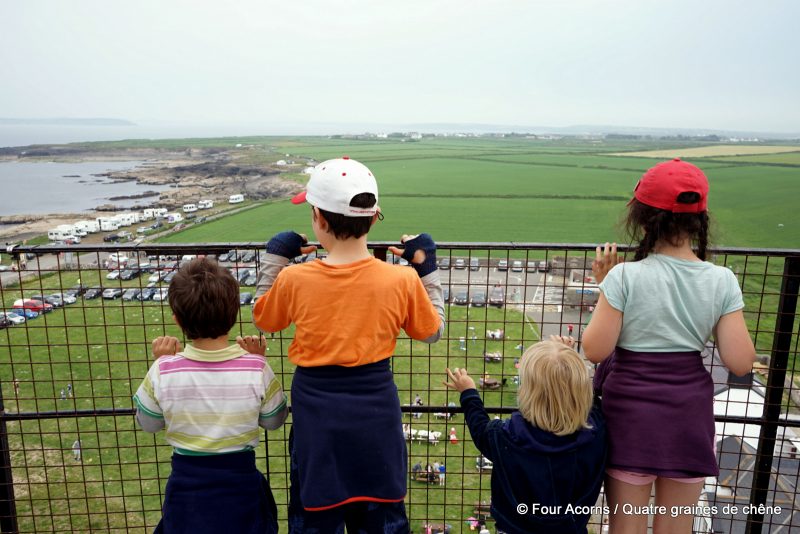
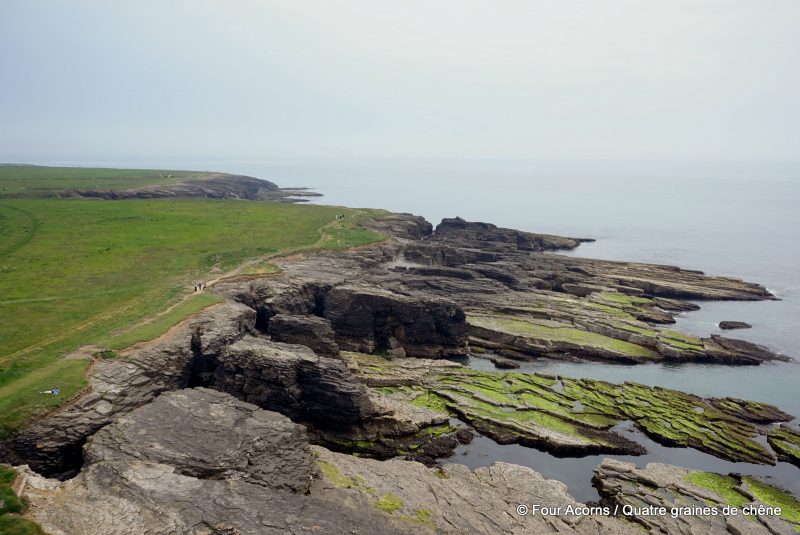
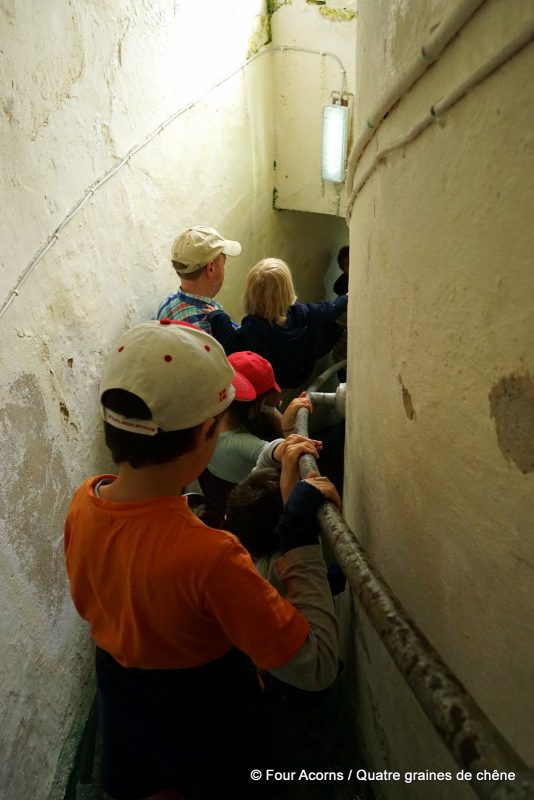
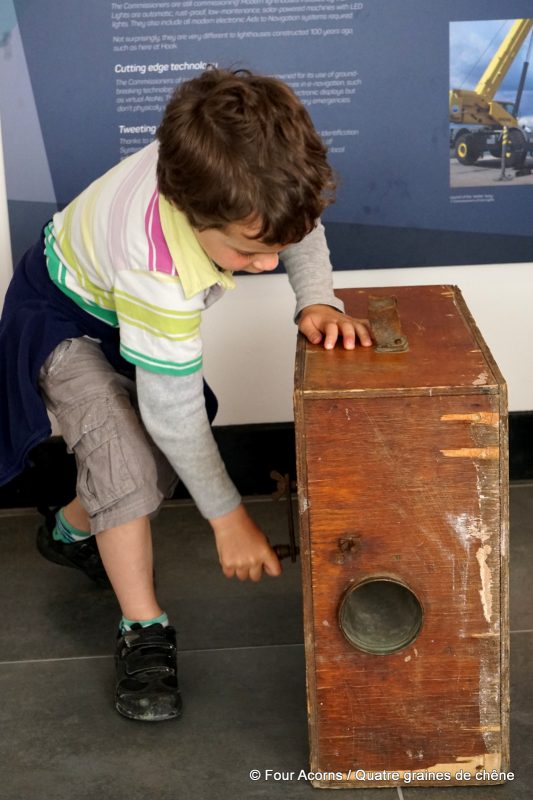
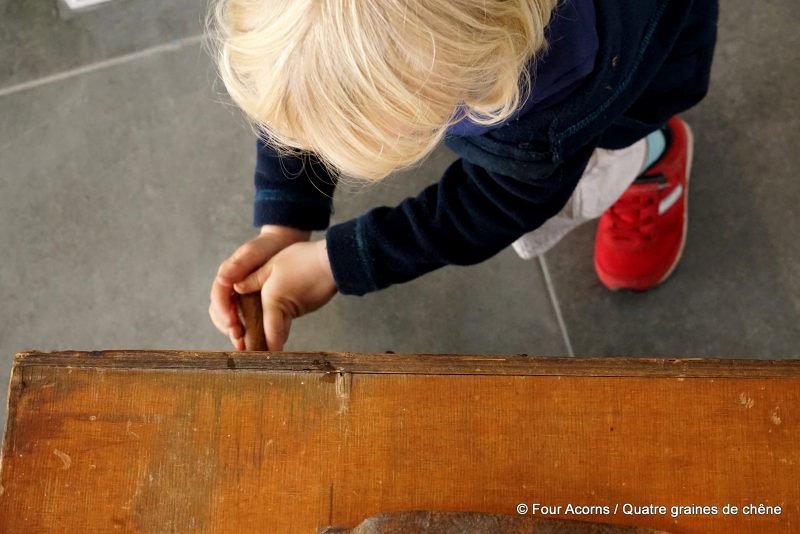
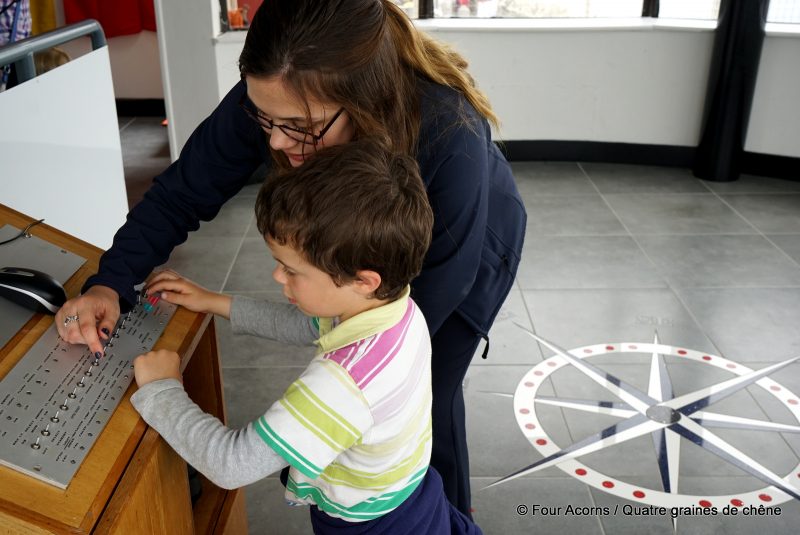
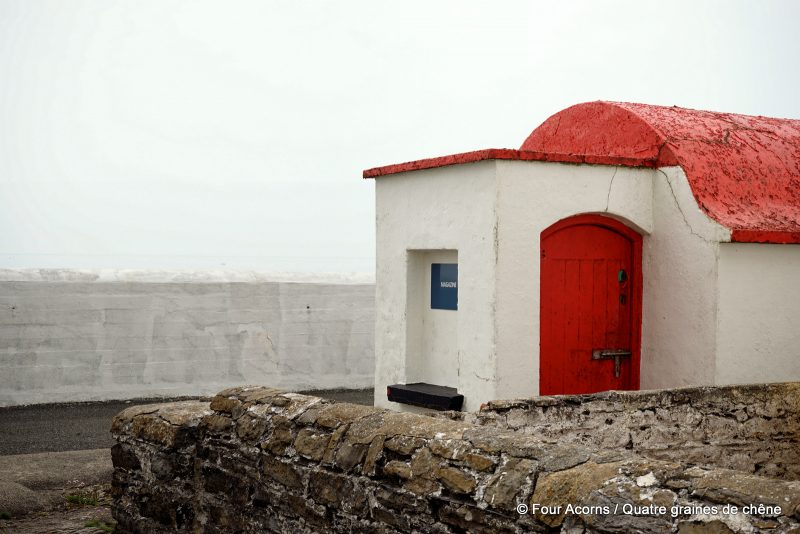
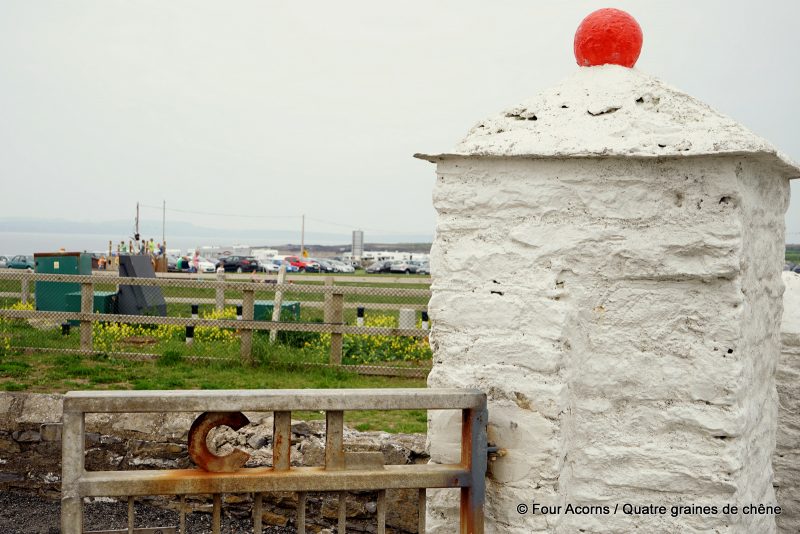
Beachside county / Le comté des vacances à la mer
We spent the rest of the afternoon with our toes in the sand at Cullenstown Beach, Co Wexford. Unlike most of the wilder beaches we usually explore, Cullenstown is equipped with toilets and an outdoor shower, which Squirrel and Mermaid reluctantly used to wash off sand and salt after their swim.
Wexford really is the beachside county.
Le reste de l’après-midi se passa les doigts de pied en éventail sur la plage de Cullenstown. Contrairement à la plupart des plages plus sauvages que nous avons coutume de visiter, Cullenstown est équipée de toilettes publiques et d’une douche en plein air, sous laquelle Sirène et Ecureuil sont passés en vitesse après leur baignade.
Wexford-plage, le comté des vacances à la mer.
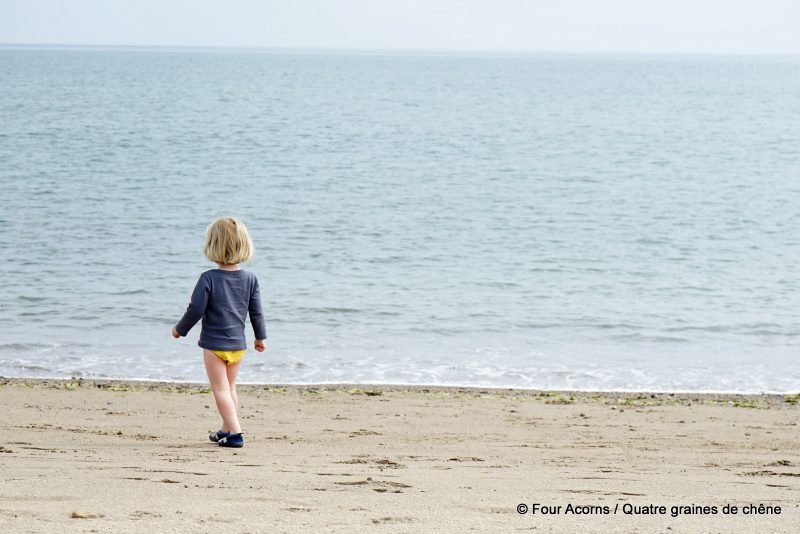
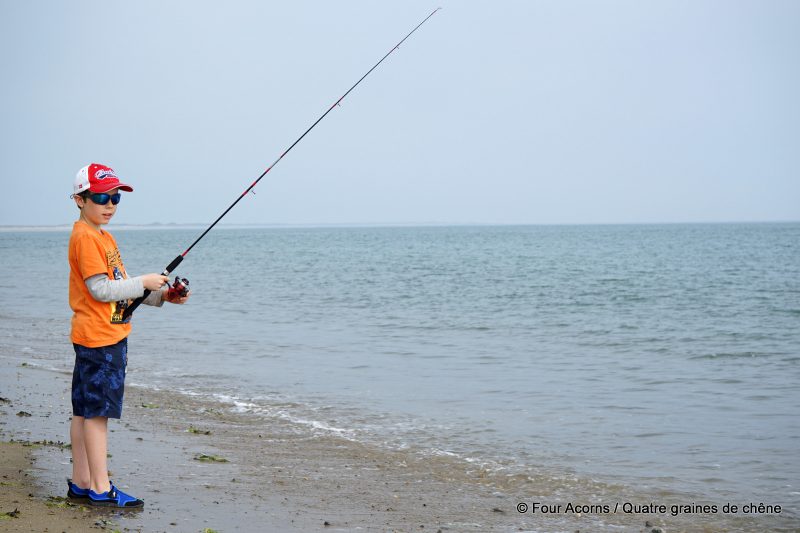
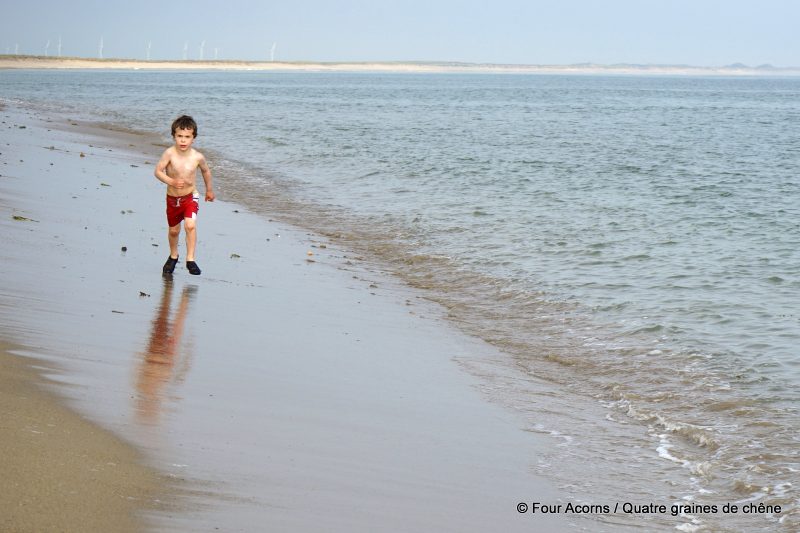
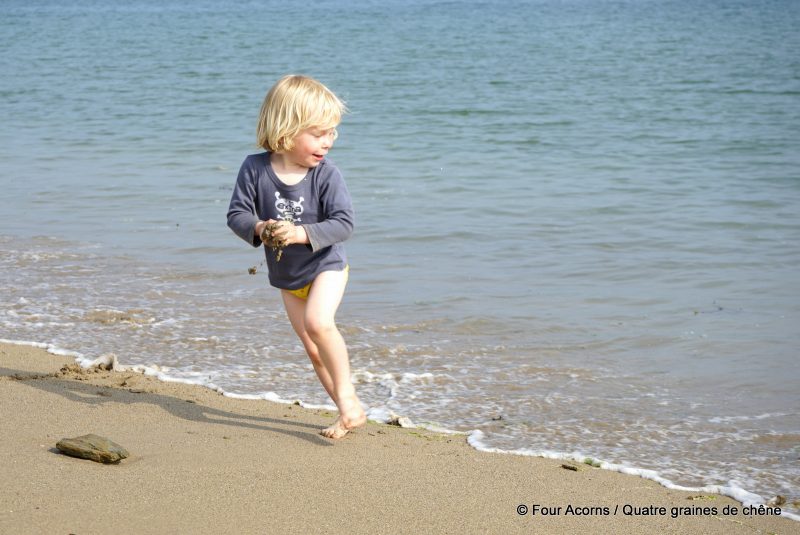
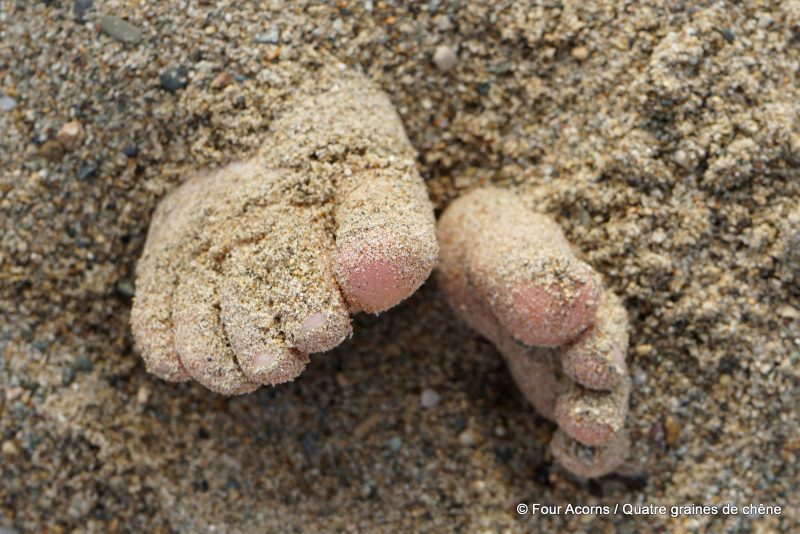
Visitor information
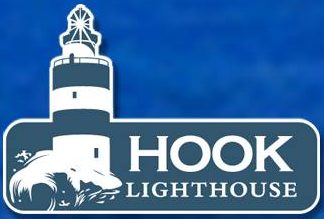 Hook Lighthouse
Hook Lighthouse
Hook Head
Co Wexford
Tel. +353 051 397055
Email info@hookheritage.ie
Open all year round, closed one week up to and including Christmas Day, reopening on St. Stephen’s Day (26th December).
Admission rates: Adult €6; Senior/Student €5; Child (5-16 years) €3.50; Child (under 5) free; Family (2+2) €18; Family (2+3/4) €20
The lighthouse tower is only accessible with a guided tour. Online booking available on http://hookheritage.ie
The Visitor Centre, located in the former keepers’ houses, comprises a gift shop, a café, an artist workshop and art classes.
Should you wish to read The Lonely Old Lighthouse, Eileen Wickham’s moving testimonial of her family’s time at the Hook, please click here.
Relax by the sea and keep an eye out for seals, dolphins and even whales. In clear weather you can see for miles, and in a storm the spray often reaches the top of the lighthouse.
 More information about other Irish lighthouses open to the public (including the ones visitors can stay in!) is available on Great Lighthouses of Ireland.
More information about other Irish lighthouses open to the public (including the ones visitors can stay in!) is available on Great Lighthouses of Ireland.
To this day, Commissioners of Irish Lights (CIL) operates 70 lighthouses dotted around the Irish coastline.
![]() For more information about the Ring of Hook and Hook Head, please visit Hook Tourism.
For more information about the Ring of Hook and Hook Head, please visit Hook Tourism.
Finally, Hook Lighthouse is one of the many historic sites of Ireland’s Ancient East.
Pour en savoir plus
 Hook Lighthouse
Hook Lighthouse
Hook Head
Co Wexford
Tel. +353 051 397055
Email info@hookheritage.ie
Ouvert toute l’année ; fermé une semaine avant Noël, réouverture le 26 décembre.
Tarifs d’entrée : adulte 6 € ; étudiant/3e âge 5 € ; enfant (5-16 ans) 3,50 € ; enfant (moins de 5 ans) gratuit ; famille (2+2) 18 € ; famille (2+3/4) 20 €.
Le phare n’est accessible que sur visite guidée. Réservez en ligne sur http://hookheritage.ie
Le centre d’accueil, aménagé dans les anciens logements des gardiens, comprend une boutique, un café, un atelier d’artiste et des cours d’art.
Profitez du bord de mer et tentez de repérer au large des phoques, des dauphins et même des baleines. Par temps clair, la vue s’étend sur des kilomètres à la ronde et, par mauvais temps, l’écume atteint souvent le sommet du phare.
 Pour en savoir plus sur les phares d’Irlande ouverts au public (y compris ceux où les visiteurs peuvent passer la nuit !), consultez le site de Great Lighthouses of Ireland.
Pour en savoir plus sur les phares d’Irlande ouverts au public (y compris ceux où les visiteurs peuvent passer la nuit !), consultez le site de Great Lighthouses of Ireland.
A ce jour, CIL (Commissioners of Irish Lights) opère 70 phares disséminés le long des côtes irlandaises.
Pour en savoir plus sur le Ring of Hook et Hook Head, consultez Hook Tourism.
![]() Enfin, le phare de Hook est un des nombreux sites figurant sur le circuit touristique des Terres Ancestrales d’Irlande (Ireland’s Ancient East).
Enfin, le phare de Hook est un des nombreux sites figurant sur le circuit touristique des Terres Ancestrales d’Irlande (Ireland’s Ancient East).
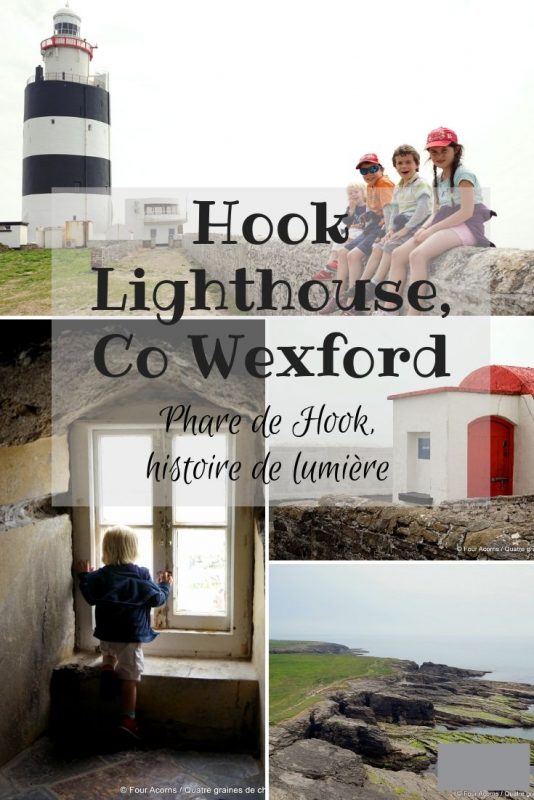
Related / Similaire
- Like a bird on the Saltee Islands / Comme un oiseau sur les îles Saltee
- A romantic weekend in an Irish lighthouse / Weekend romantique dans un phare irlandais
- Midsummer camping at Silver Strand / En camping à Silver Strand pour la Saint-Jean
- A Dublin Bay cruise / Croisière en baie de Dublin
- 10 destinations to go wild in Ireland
Disclosure: This post contains some affiliate links. Should you choose to make a purchase after clicking on one of them, I may receive a small commission and your purchase will help support this site.



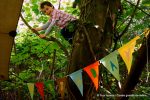 Previous Post
Previous Post Next Post
Next Post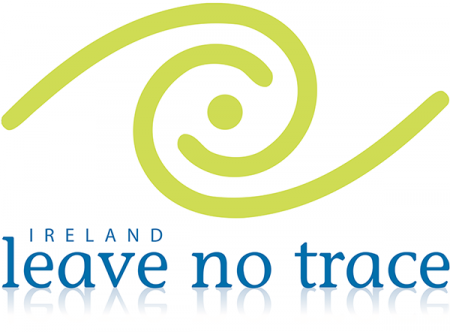
Glad you enjoyed the Hook Lighthouse, I don’t quite know how to take the comment chatty wife .It may have seemed to you my husband had nothing to say .In fact ,he was not supposed to be in filming with me . It was a story of lighthouse keeping as told by Tux Tweedy from the lighthouse keeper’s point of view with technical details , and my interview was to cover the daily life from a lighthouse keeper’s wife’s point of view .I love the Hook and I could write a book on the life of a lighthouse family ,it was unique ,sometimes lonely ,but never dull ,maybe someday I will even at the age of 75
warm wishes
Eileen (Wickham)
Eileen
Dear Eileen,
Thank you so much for commenting. If you were to write a book about a lighthouse family, I would be one of your readers, you can count on that! I read your piece on the Hook website, and it brought tears to my eyes. Such a unique way of life, it’s fascinating.
Sincere apologies about the “chatty wife” comment – it’s only that you did most of the talking in the video we watched during the tour. In any case, I will amend it right away.
Thank you so so much for taking the time to write. I never expected to hear directly from you, and I am so glad that you did. Please never stop telling your story and memories of life in a lighthouse.
Warm regards
Annette
Hello Agnes
I am so glad you enjoyed your trip to hook .NoI did not mind your comment not at all, not the first time I heard that comment .Ray did a few interviews himself .It was a haopy few years at Hook .It was a uniwue way if life , could be very lonely at times especially when my husband was stationed at the many off shore stations around the coast for six week on two weeks off But I have many many happy memories and stories to reflect on
.I will try send you a piece from another interview if you ste on facebook email or whats ap.
Warm wishes
Eileen (Wickham)